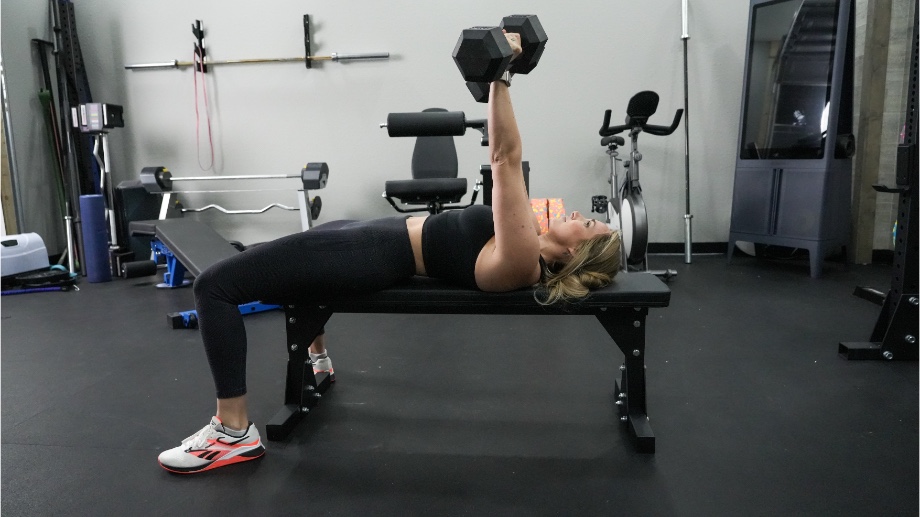We test and review fitness products based on an independent, multi-point methodology. If you use our links to purchase something, we may earn a commission. Read our disclosures.
If you feel overwhelmed by the vast world of training apps and the best online workout programs—you’re not alone. There’s no one-size-fits-all solution to exercise, and there are tons of different methods to train and get stronger.
If you want a basic, no-frills gym routine for muscle building, the push, pull, legs routine is a safe bett. It’s a popular workout split among bodybuilders and powerlifters that breaks up training sessions into three distinct days: one for pulling exercises, one for pushing exercises, and another for leg exercises.
In this guide to the push, pull, legs split (aka the PPL split) I, a NSCA certified personal trainer of six years, will walk you through what to expect for training frequency, reps, and sets, and how to build your own PPL workout plan for maximum strength gains.
What Is the Push-Pull-Legs Workout?
The PPL split is straightforward. You’ll train three or six days per week (depending on your goals and experience level). On one (or two days), you’ll target your pushing muscles (shoulders, chest, and triceps). During the pulling day(s), you’ll hit primarily training your back and biceps. And on your leg day(s), you’ll train quads, hamstrings, and calves.
So, if you’re used to full-body workouts, a push, pull, legs split can separate your workouts into three categories: chest-dominant pushing muscles, back-dominant pulling muscles, and the major muscle groups of the lower body. Traditionally, bodybuilders use this method for a six-day split when training their chest, back, and legs twice a week.
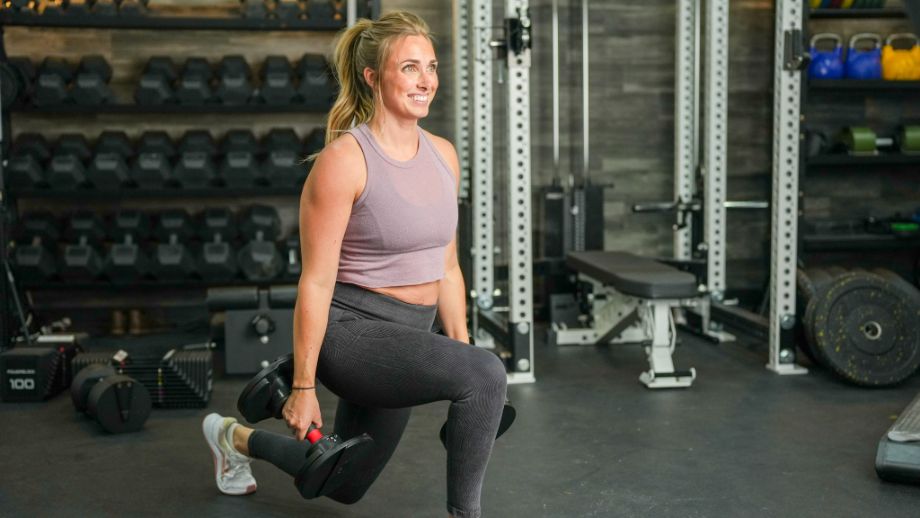
Beginners can opt to train three days per week, hitting one push day, one pull day, and one leg day cycling each muscle group once. The six-day split is a lot of volume, so you may find it hard to recover from initially. Each muscle grouping will get 48 hours of rest between training days, so you shouldn’t experience severe muscle soreness once you acclimate (give it two weeks).
RELATED: Beginner Workout Schedule
PPL splits are relatively simple. In the examples you’ll see later in this guide, each workout only has four exercises. PPL prioritizes compound movements (like squats, deadlifts, and push presses) because they engage multiple muscle groups. The first accessory movement supplements the main lift, the last two exercises are typically isolation exercises that help to build muscle and are done with higher repetitions.
RELATED: Push and Pull Workout
Push-Pull-Legs Example Schedule
Here is an example of a six-day split with a rest day in the middle. Beginners should start with a three-day split and additional rest days.
| Training Day | Training split | Muscle groups used |
| Day 1 | Push | Chest, shoulders, triceps |
| Day 2 | Pull | Back, traps, shoulders, biceps |
| Day 3 | Legs | Quads, hamstrings, glutes |
| Rest | ||
| Day 4 | Push | Chest, shoulders, triceps |
| Day 5 | Pull | Back, traps, shoulders, biceps |
| Day 6 | Legs | Quads, hamstrings, glutes |
Design Your Own Push Day
Your chest, triceps, and front delts are the primary muscles used to push weights around in the gym and other aspects of your life (Hello, functional fitness). As a personal trainer, I like to program a compound pushing exercise, an accessory push, an overhead pressing motion, and a triceps isolation exercise. It’s not fancy, just an effective way to gain muscle and strength.
Below are some of the most fundamental upper-body pushing exercises you can perform. Choose one exercise from each category, then keep scrolling below to see how to program your own workout.
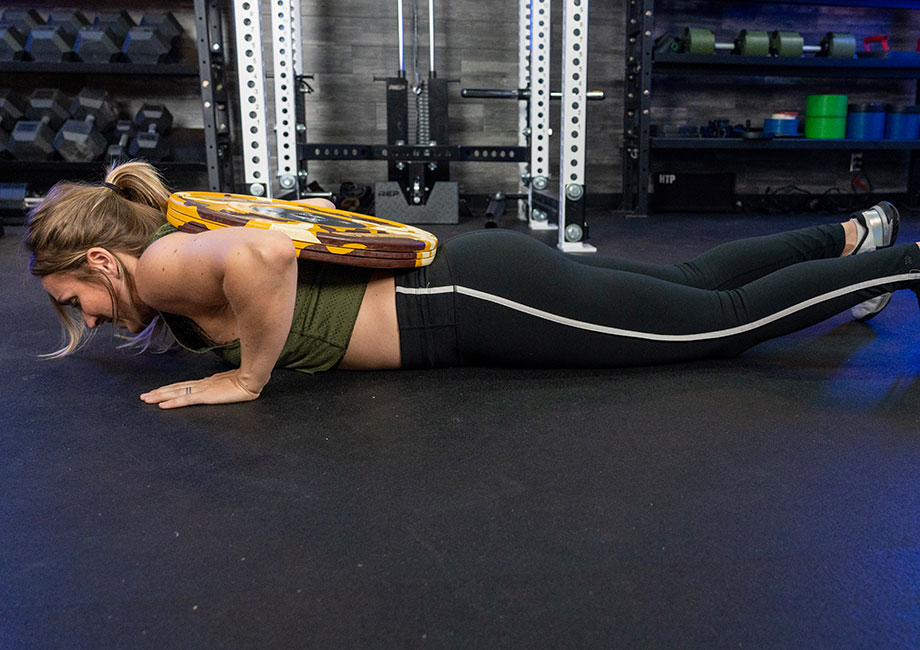
Choose one of the following compound exercises for pushing:
- Push-up
- Barbell bench press
- Dumbbell bench press
- Overhead press or push press
- Close-grip bench press (or wide grip)
Choose one of the following accessory movement patterns for pushing:
- Dumbbell chest fly
- Incline barbell bench press (or dumbell)
- Floor press
- Cable crossover
Choose one of the following overhead movement patterns for pushing:
Choose one of the following tricep isolation exercises:
- Triceps dips
- Triceps pushdown
- Skull crusher
- Triceps kickback
Example Push Day Workout
Using the recommended push exercises and accessories, drop your selected workouts into a chart like the one below for a custom push day workout.
| Category | Sample exercise | Sets | Reps |
| Compound push | Barbell bench press | 3-4 | 5-8 |
| Accessory push | Dumbbell chest fly | 3-4 | 8-10 |
| Shoulders | Push press | 3-4 | 10-12 |
| Triceps | Dips | 3-4 | AMRAP* |
* As many reps as possible
Design Your Own Pull Day
For pull day, you’ll follow the same formula above for the muscles responsible for pulling movements, including your lats, rhomboids, traps, delts, and biceps. You can use the categories below to pick a compound lift, accessory lift, shoulder exercise, and biceps isolation exercise.
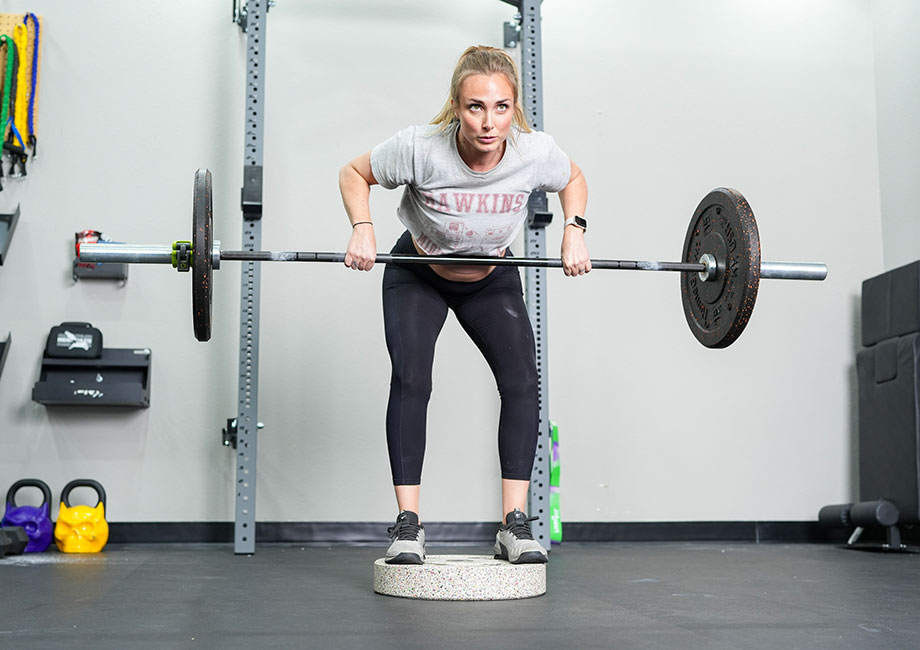
Choose one of the following compound exercises for pulling:
- Inverted row
- Pull-up
- Barbell row
- Bent-over dumbbell row
Choose one of the following accessory movement patterns for pulling:
Choose one of the following shoulder movement patterns for pulling:
- Lateral raise
- Rear-delt fly
- Face pull
- Farmer’s carry
- Dumbbell shrug
Choose one of the following biceps isolation exercises:
- Biceps curl (21s)
- Barbell curl
- Hammer curl
- Preacher curl
Example Pull Day Workout
Using the table below, here’s how you can organize your own pull day workout.
| Category | Sample exercise | Sets | Reps |
| Compound pull | Barbell bent-over row | 3-4 | 5-8 |
| Accessory pull | Lat pulldown | 3-4 | 10 |
| Shoulders/traps | Farmer’s carry | 3-4 | 30-60 seconds |
| Biceps | Hammer curl | 3-4 | 10-15 |
Design Your Own Legs Workout
You can argue that you’ll be both pushing and pulling on your leg day, but the PPL split tosses everything lower-body related into one day. Choose one exercise from each of the four categories below to put together your own leg day workout.
As a personal trainer, I like to throw in some calf raises on leg day (even as a warm-up) for myself or my clients. It’s also important to keep in mind there are tons of variations, regressions, and progressions for nearly every exercise. Take these recommendations with your fitness level in mind.
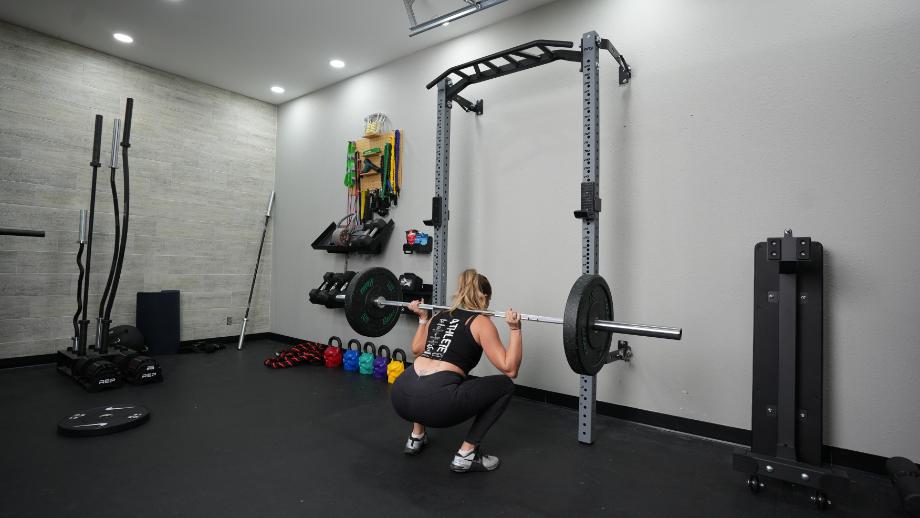
Choose one of the following compound movements for legs:
- Back squat
- Front squat
- Deadlift
- Romanian deadlift
- Dumbbell lunges
Choose one of the following accessory movement patterns for legs:
- Hip thrust
- Glute bridge
- Step-up
- Split squat
- Walking lunges
Choose one of the following hamstring isolation exercises:
- Hamstring curl
- Glute-ham raise (GHR)
- Kettlebell swing
- Good morning
Choose one of the following quad isolation exercises:
- Leg press
- Sissy squat
- Leg curl
- Heels-raised goblet squat
Example Leg Day Workout
Take your selections and drop into a chart for a complete leg day workout like the table below.
| Category | Sample exercise | Sets | Reps |
| Compound legs | Romanian deadlift | 3-4 | 5-8 |
| Accessory legs | Split squat | 3-4 | 10 |
| Hamstrings | Good morning | 3-4 | 10-15 |
| Quads | Leg curls | 3-4 | 10-15 |
Push Pull Legs Routine: Final Thoughts
The PPL split is an effective way to build both strength and muscle, which is why both bodybuilders and powerlifters gravitate towards this style of training. But you don’t have to be training with a competition in mind to split up your workout routine into pushing, pulling, and leg exercises.
The PPL split is ideal for home gym owners or commercial gym goers alike. It’s adaptable to the equipment you have access to and can always be made more challenging with heavier weights, more reps, or harder exercise progressions.
Pull Pull Legs Routine: FAQs
What are the disadvantages of push pull legs?
The disadvantage to a push/pull/legs split is the higher training frequency, which may be hard to recover from, especially for anyone not used to split training sessions.
Is PPL better than full body?
Neither a full-body workout routine nor a push, pull, legs workout is the end-all-be-all workout plan. The PPL provides more rest for the larger muscle groups of the body versus several full-body workouts throughout the week. However, athletes or folks training with specific goals in mind may not benefit from splitting their workouts into chest, back, and legs categories.
What is the best split for working out?
The best training split is the one you can commit to in both time and effort. The push, pull, legs is an easy way for beginners and advanced lifters alike to train for muscle growth and hypertrophy without overtraining. For beginners training on a three-day PPL split it can be an efficient way to train, however more experienced lifters who turn the PPL into a six-day split are in the gym more often and it can become more of a time commitment.
Is PPL good for athletes?
While it’s not a bad idea for athletes to train using a push, pull, legs split during their off-season, most athletes will need to train for speed, conditioning, and cardio and focus less on muscle building as they get closer to their sport’s season.
Further reading

The Rogue Deep Dish Platesare the first made in America cast iron weight plate that Rogue Fitness has released. Harkening back to York Milled Plates, the Rogue Deep Dish Plates are accurate, priced extremely well, and look as good as they perform on a barbell for squats, deadlift, bench, and any other movement you’d like to perform. If you like the aesthetics, they’re one of the best value iron plates available. Read more

Considering a Peloton Bike for your home gym? We’ll dish all the pros and cons in our Peloton Bike review. Read more

Wondering which Life Fitness functional trainer is best for you? We take a look at the top two models from this commercial brand. Read more

In this Gorilla Bow review, the Garage Gym Reviews team will tell you why this unique resistance band system could be a great add to your home gym. Read more

